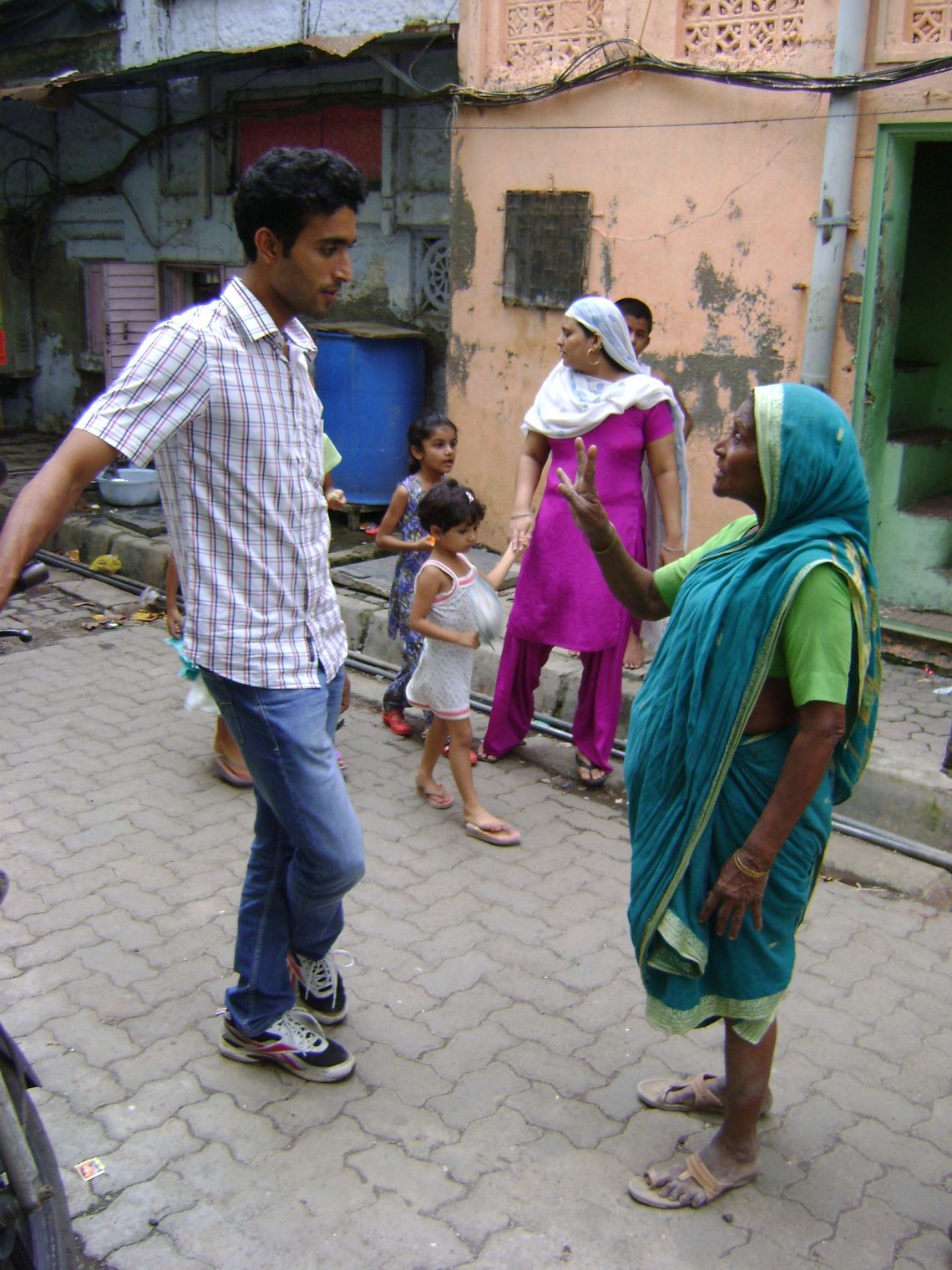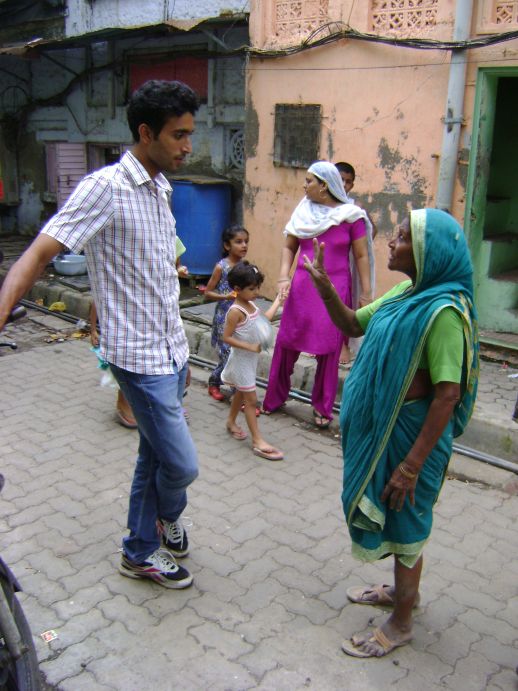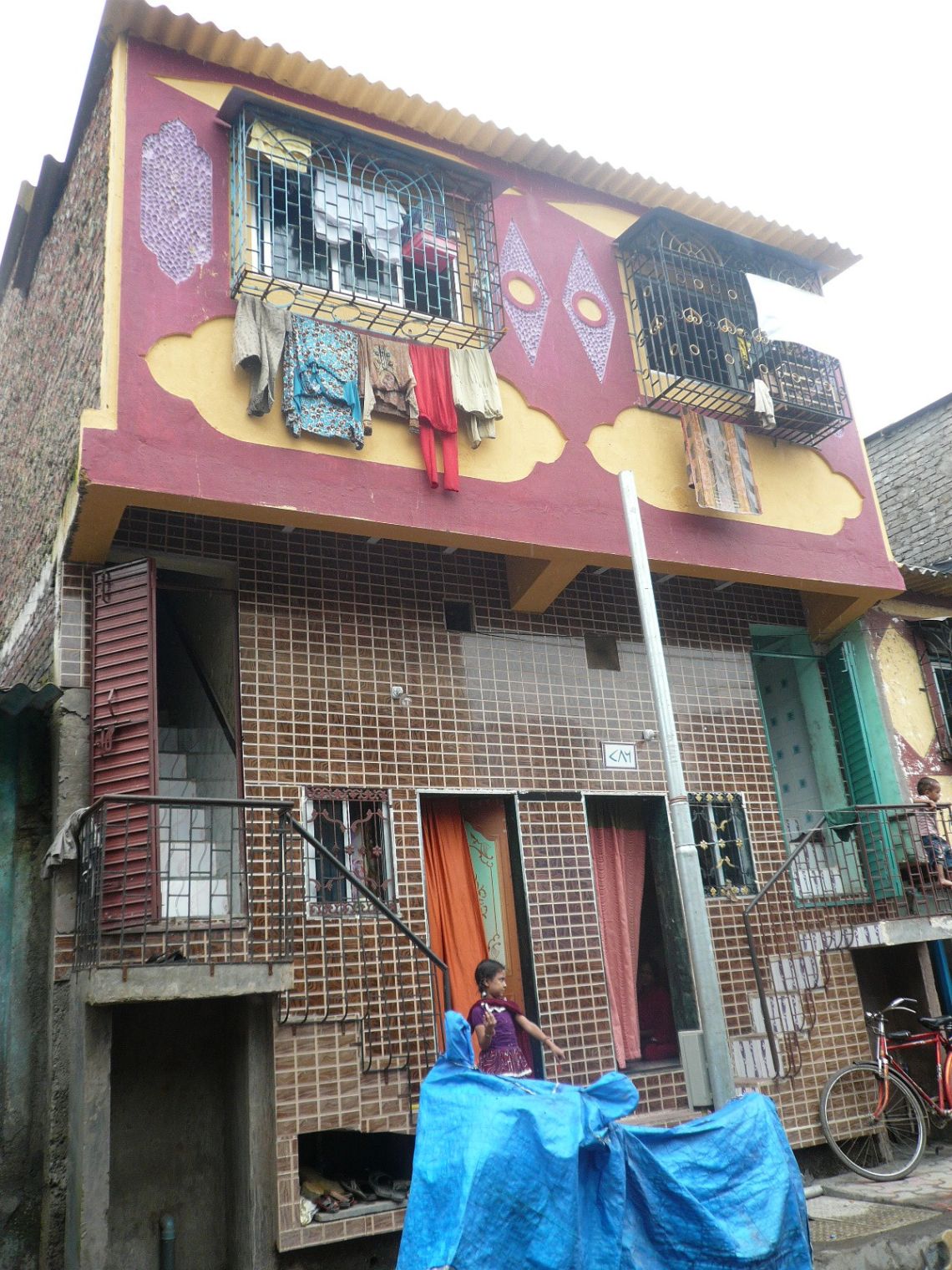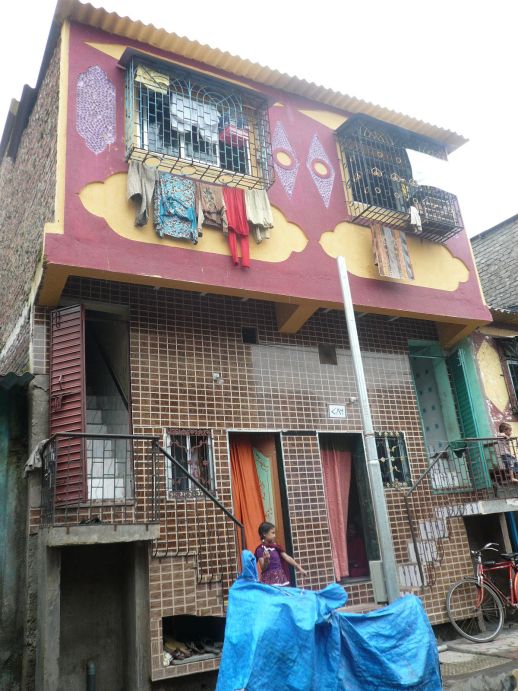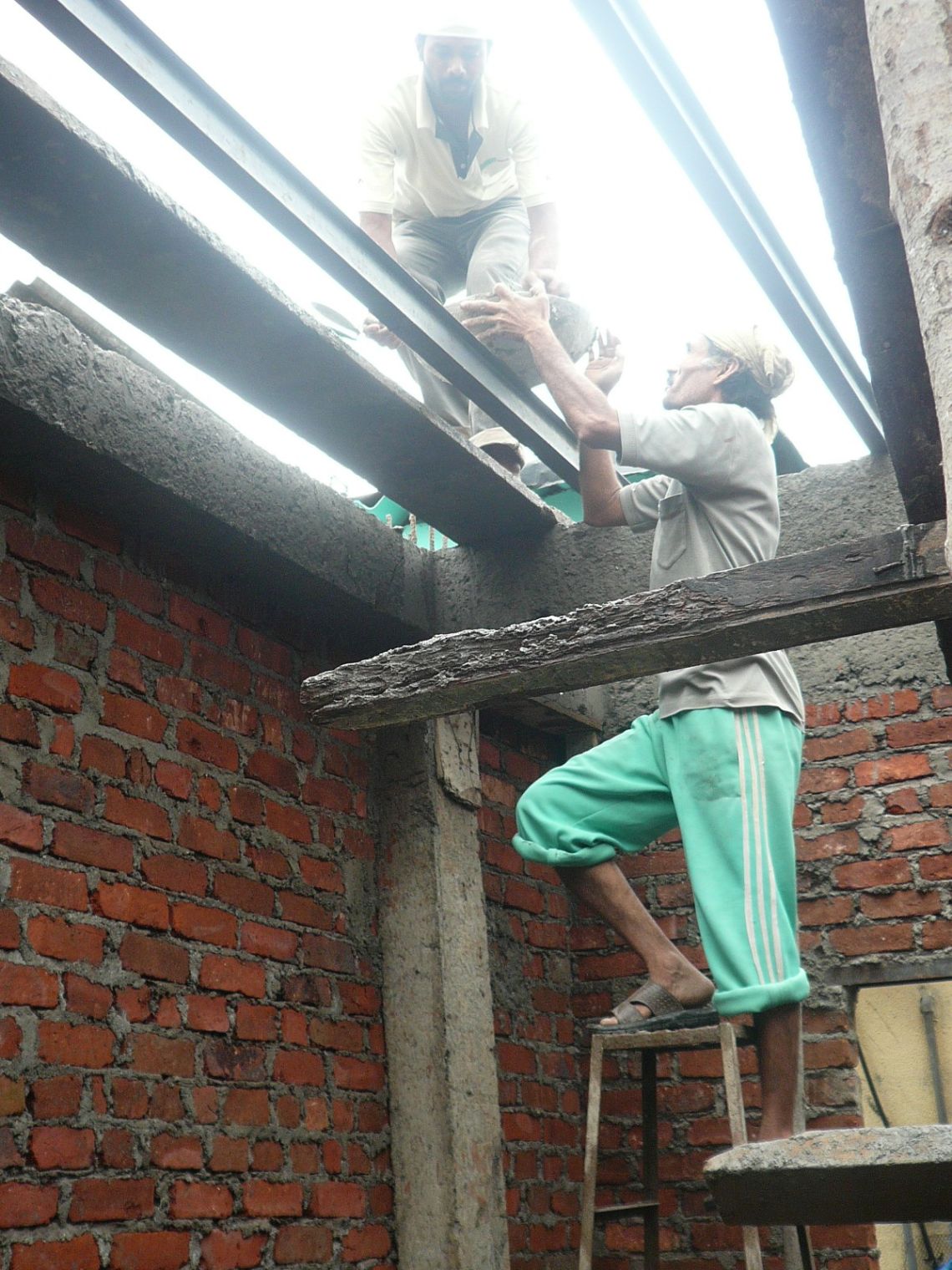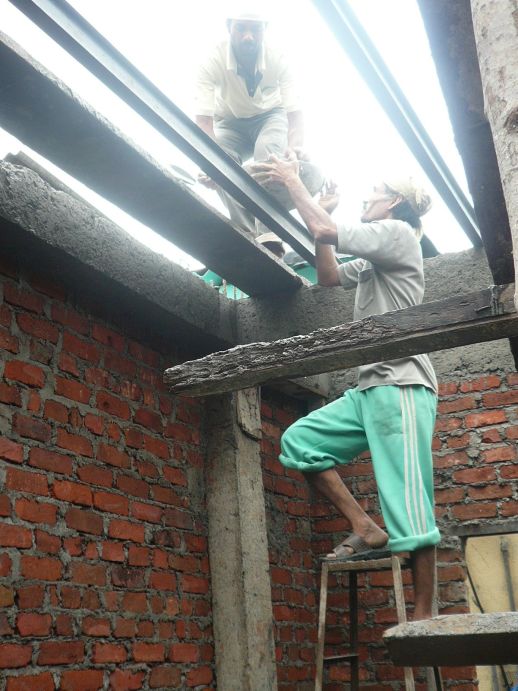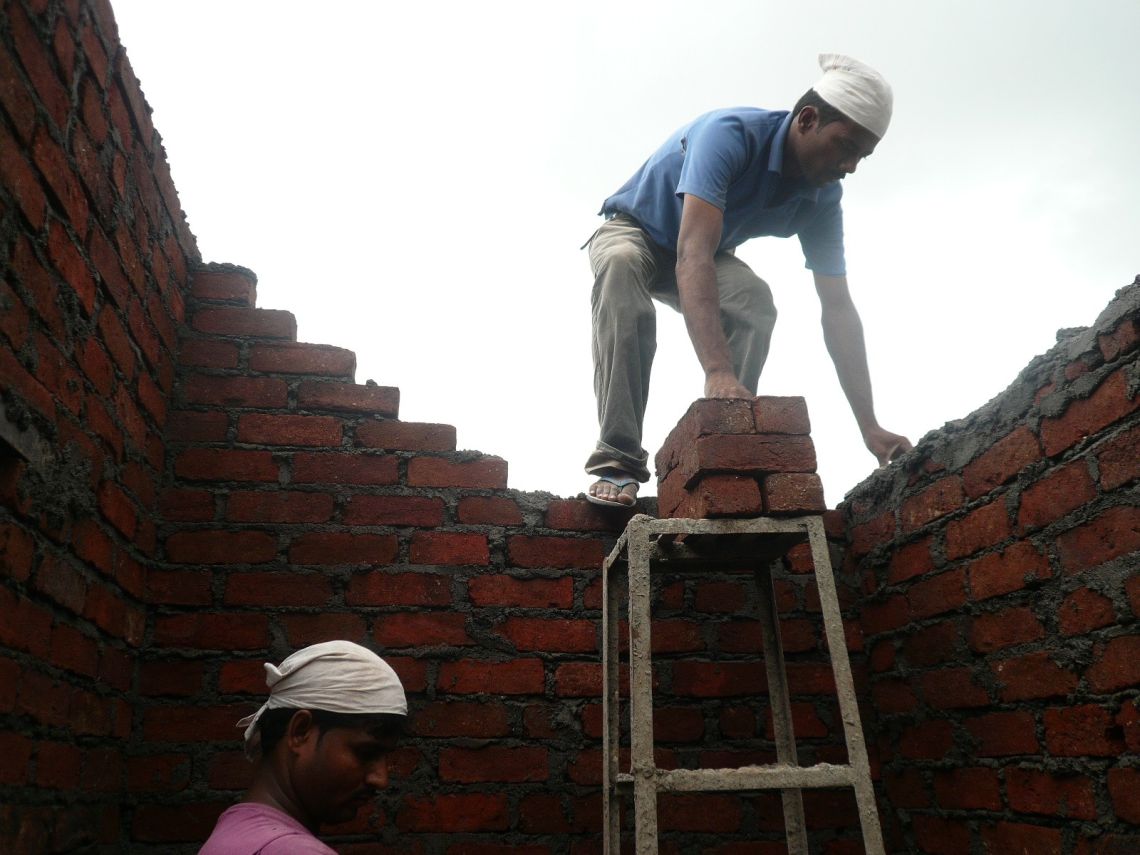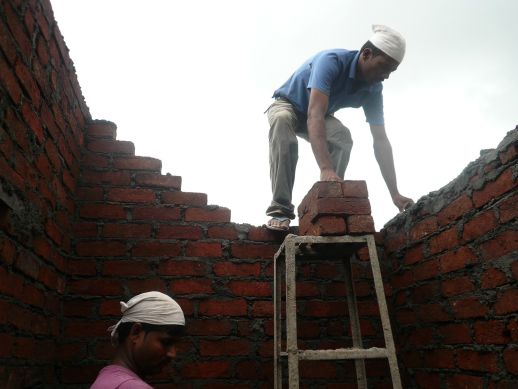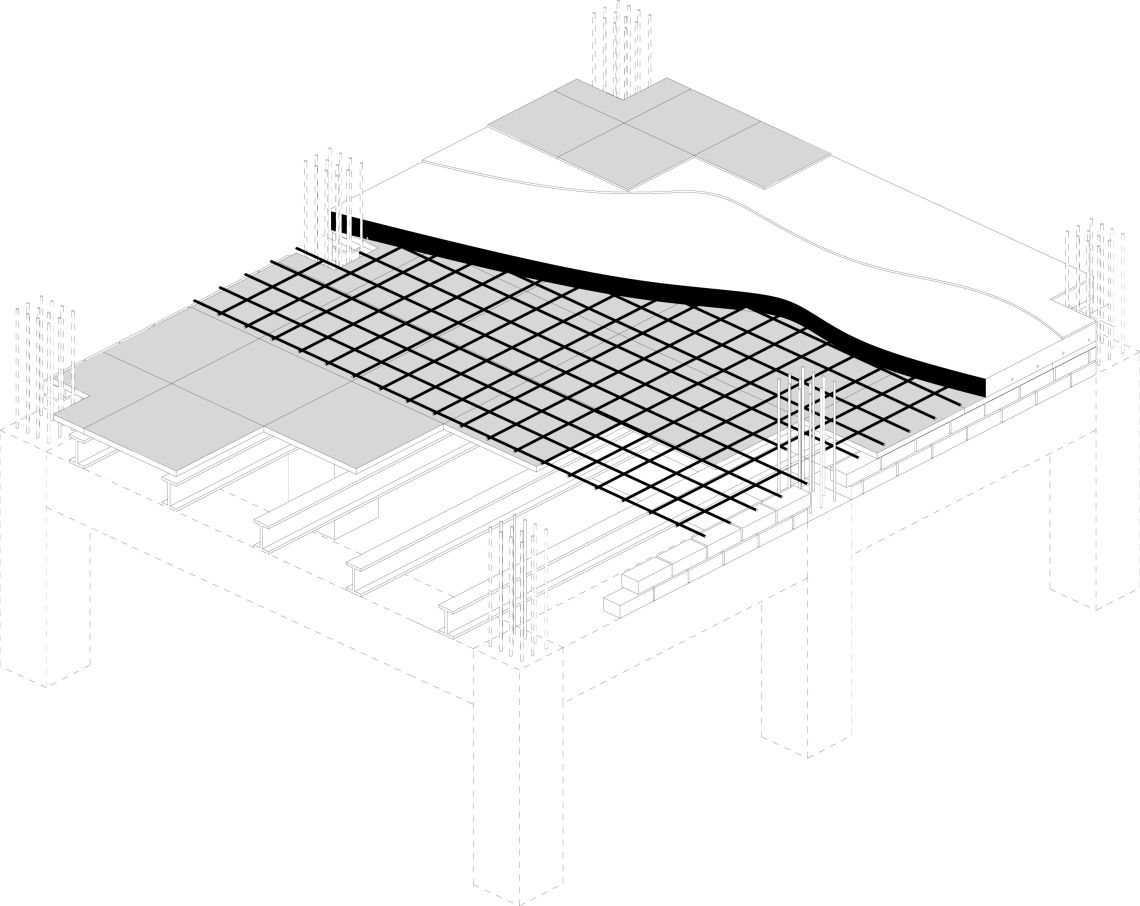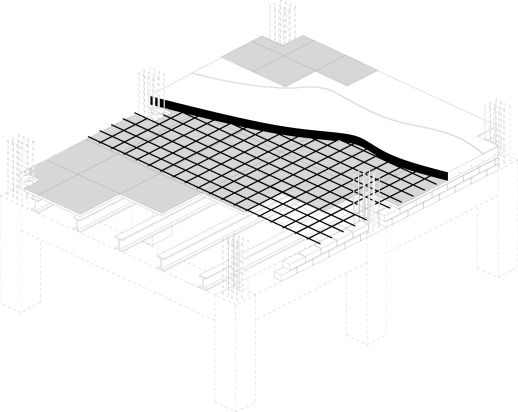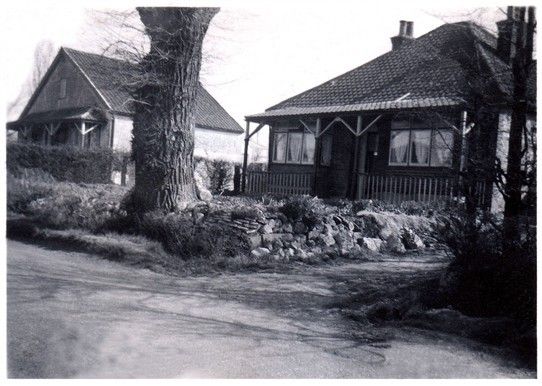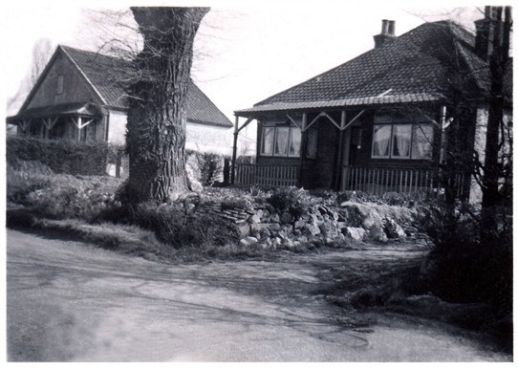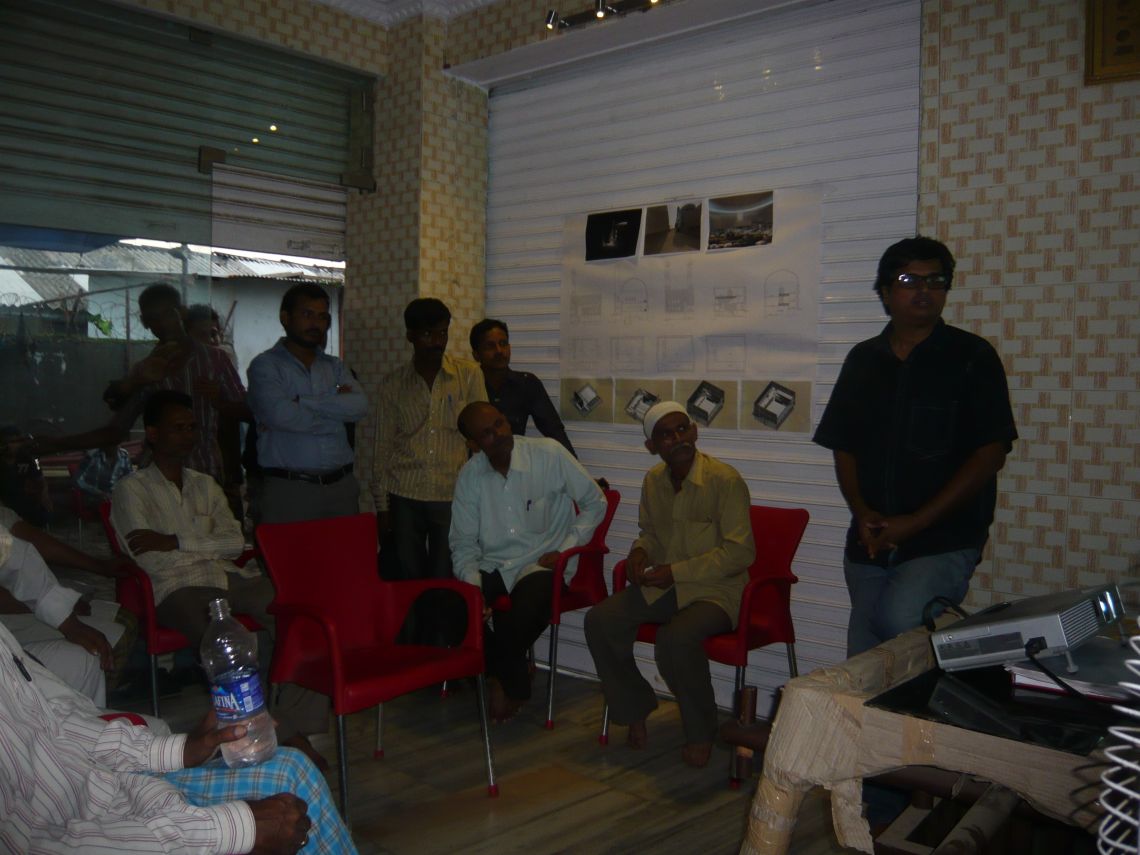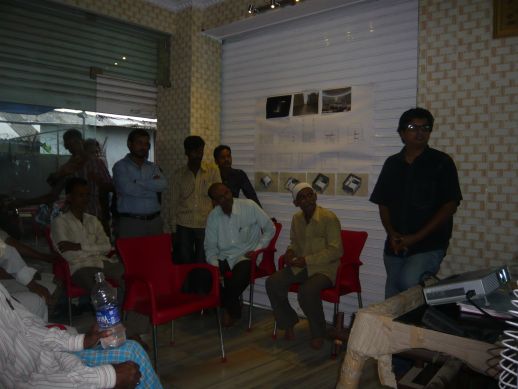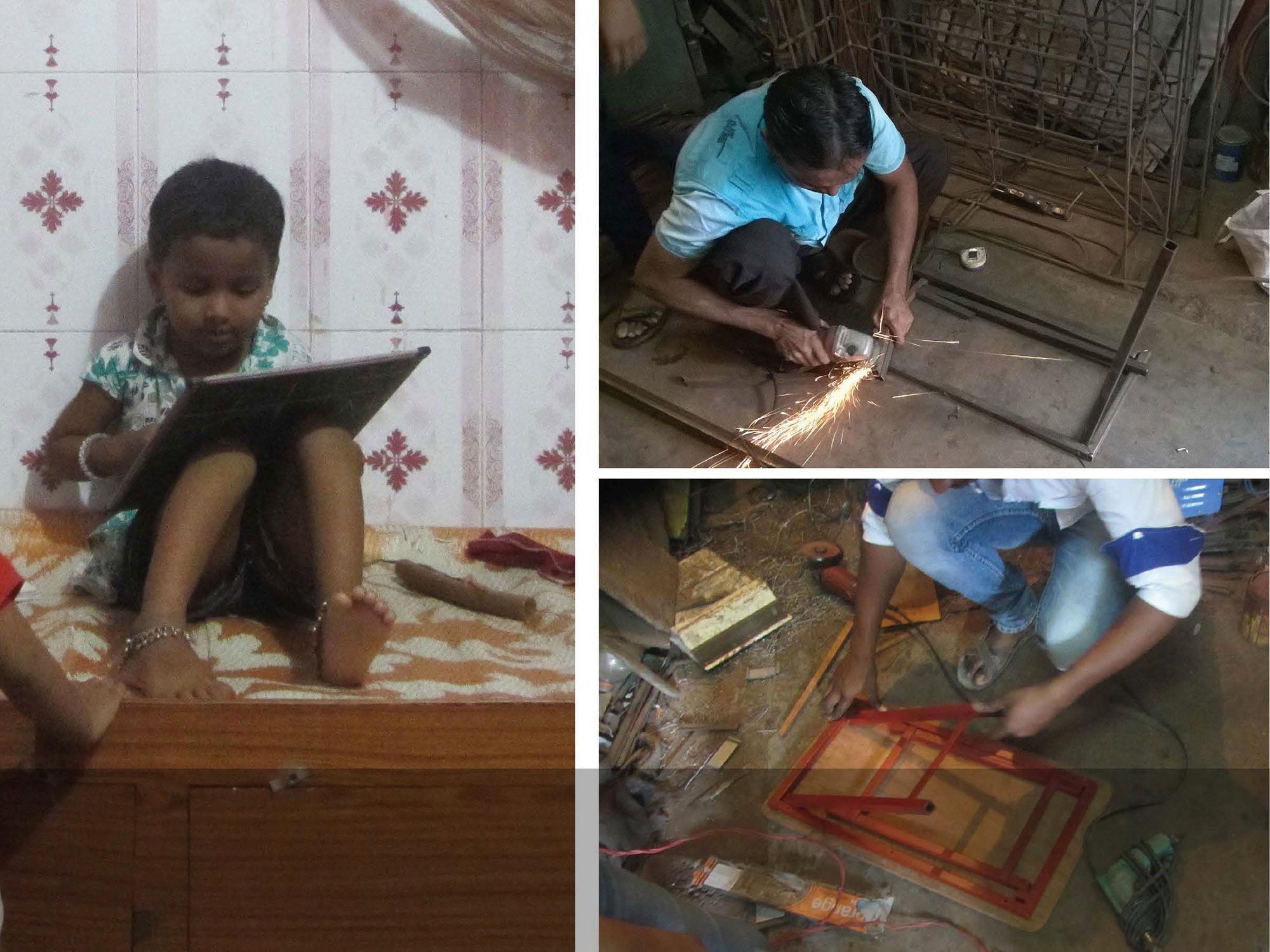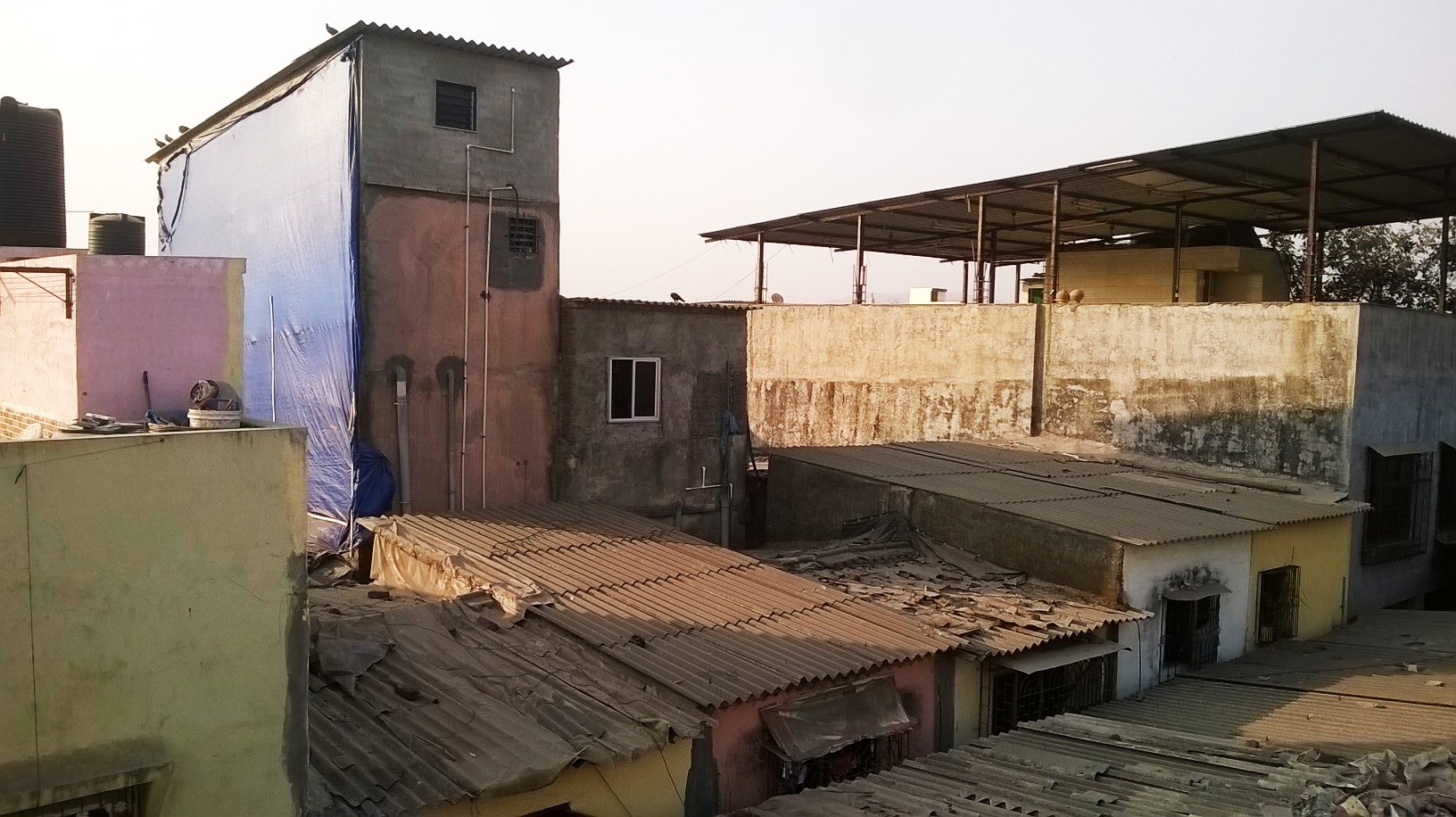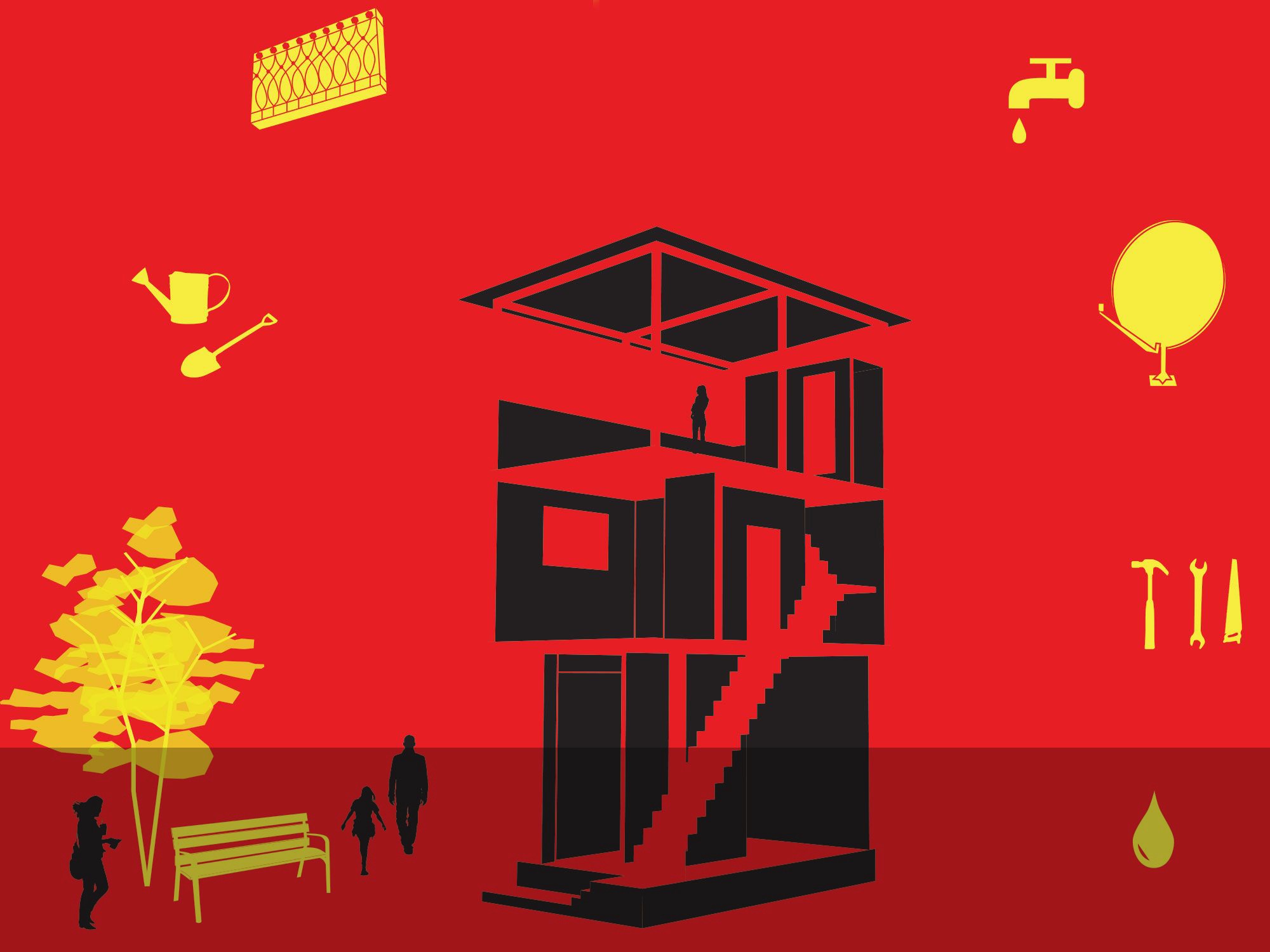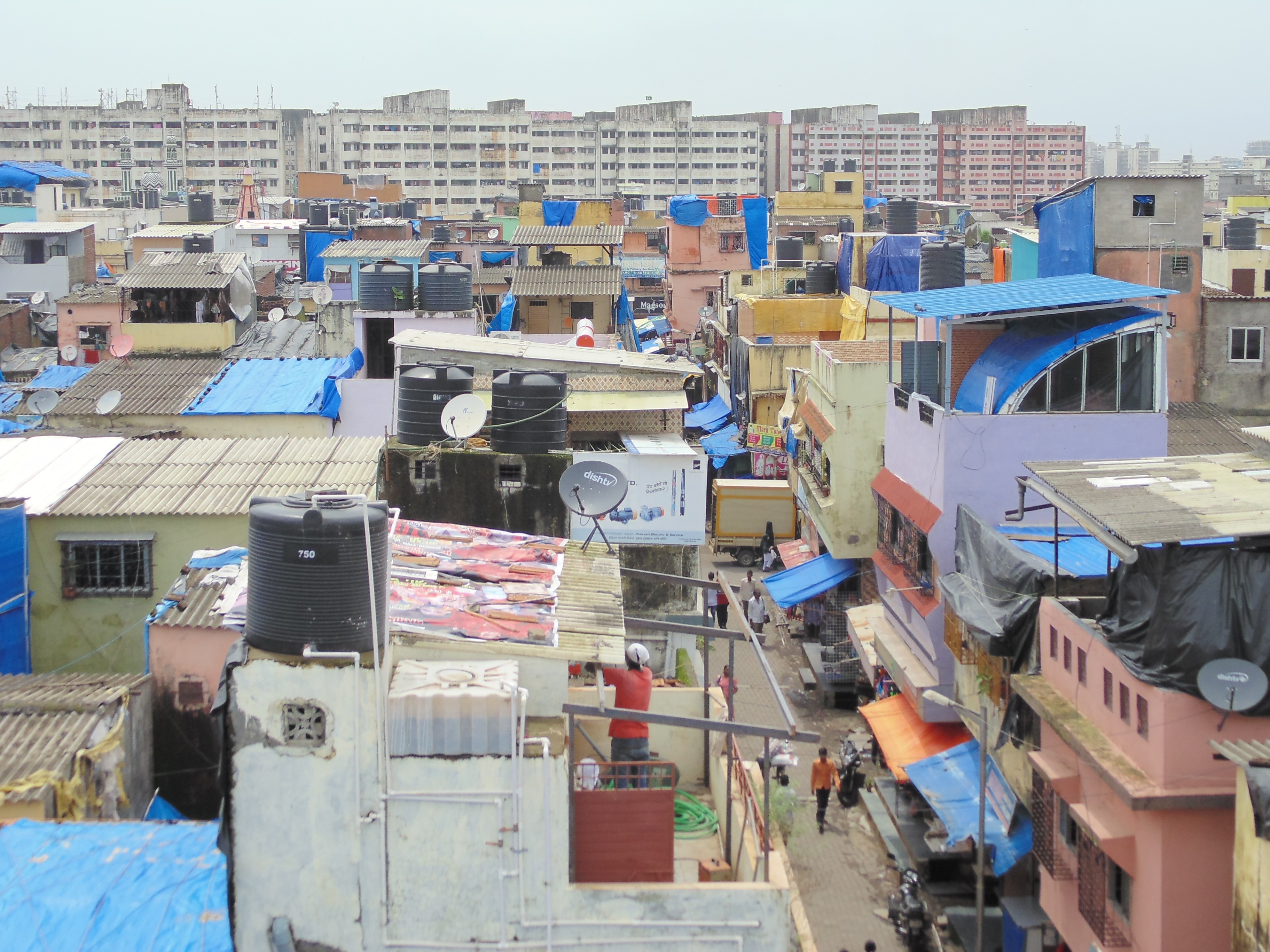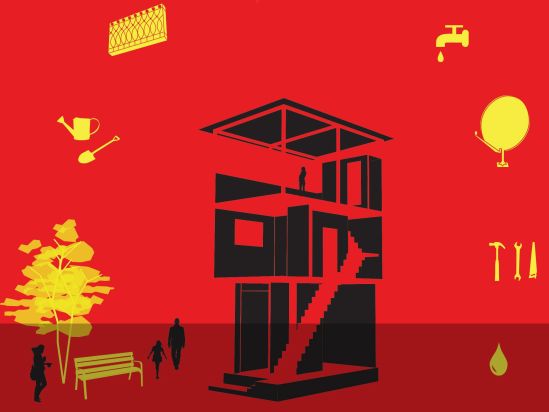Shivaji Nagar: Homegrown Neighbourhood

Shivaji Nagar: Homegrown Neighbourhood
An architect can make a lot of friends in Shivaji Nagar -a neighborhood in the M-ward of the Brihan Mumbai Municipal area that started off as a resettlement area for people displaced from development projects around the city in the 1980s and earlier. Nearly every other person one meets here is in the business of building. Local contractors, who are often representative of the ’self’ in self-built housing are an important part of the locality’s history of home growth. In their own words they are constantly “making legal out of the illegal”. Contrary to popular belief, houses here are constructed as any other building in the city would be -beams, columns and foundation structured from reinforced concrete, brick cladding and high quality finishes based on personalized aesthetics.
The real difference however is in the process of design and execution, not the end products. In a way disorienting for those accustomed to a more mainstream (though not necessarily traditional) architectural methodology, the involvement of drawings and technical visual tools are often rendered unnecessary. There is a transfer of knowledge that is communicated from the client to the contractor to the head masons to the labour and hired workers that goes beyond mediated data exchange.
The design is also affected considerably by unadapted Municipal policies, or the lack of revision in them. The dated BMC policies in place for the area (which are terribly difficult to access, having found out the hard way) have motivated the evolution of an oral code for construction among the contractors and BMC officials. These rules, adapted to local context, are followed as unwritten law in the construction business. For instance, the 2 ft cantilever on upper floors of each house, or the protrusion of window grills by 9 inches, no more. The plinth may only extend by 2ft onto the road and the height of any house should not exceed 3 floors.
Some of the existing archaic laws responsible for the informalization of the building process include using wooden members for mezzanine floors, and not allowing the labour force to work on Sundays. Up to date laws would acknowledge the fact that steel is strong, durable, cheaper and easily available. A house needs to be built as quickly as possible (the family relocates to a small, expensive rented place until then) and there is pressure from the labour force to work more days (they are paid on a per day basis). The uncomfortable height restriction of 14 ft counts for a little too much for one floor and a little too less for two (who wants a house with a floor and a half?). This lapse between the written word and the actual condition on field creates a breeding ground for negotiations. These negotiations with patrolling officers and politicians in charge of the area are mainly responsible in modifications in the law, which reflect in modifications in design. We can’t say that the construction process is informal – it is highly regulated and controlled. Each building is the product of a negotiation between officers and contractors. Informality is thus on the side of the municipality, not of the neighbourhood.
For instance, through mutual understanding, the contractor builds a dummy wall for the first floor so that it can be ‘demolished’ by BMC officials, fined and then continued as it is. When one politician in the locality decides to build their house up to 3 floors instead of the 2 that were allowed until now, rules get relaxed and this becomes the new height limit. The pay-off for the officials, councillors, journalists and social workers in the area adds up to a big percentage in the ‘construction cost’. The RTI (Right to Information) Act is used as a common tool by the people getting paid off to extract money from contractors who represent homeowners interested in investing in the improvement of their houses. Included in this system of contract is a formal exchange of terms and conditions- work processes involved, time needed, cost, materials , bribes and the financial model to be followed on paper. As per challenges that come up during construction- from fluctuating site conditions, to stray BMC officials- the design is tweaked, and inventive ad-hoc solutions proposed. These processes culminate to define the existing mode of planning followed in Shivaji Nagar.
Drawing parallels, prior to the Town and Country’s Planning act,England had demonstrated a rich history of self built housing. The’Plotlands’(1870 – 1939), a series of self-build structures in the south-east of England, represents the last significant example of liberal regulation producing unique habitations. Post 1947, a full set of completed drawings was needed for every small, built gesture. This – tied with the difficulties in obtaining finance, mortgages and increasingly complex building regulations- has led to the shocking point where only 1 in 10 new homes in the UK are self-built.
Contrarily, in Shivaji Nagar, homes, shops and homes with shops are constantly being built, demolished and rebuilt. Aspirations grow quickly, as does the desire for personal home improvement. The state’s lack of involvement in improving of the area, in spite of regular election-to-election promises of doing so, adds to the family-centric initiative to build bigger and better. As a result is created a self managed and self-organised community, deeply involved in it’s own improvement. Each time an existing home owner decides to build a house here, the family contacts one of the 300 or more local contractors operating within the area. Usually the one with the closest familial or friendly ties clinches the project. Better the reputation, greater the trust within the neighbourhood and its people and more flourishing is the business. Trust, is therefore the consistent key factor for maintenance of high quality construction practices in this case.
Interaction with the process of building construction in the area, and the actors involved, has led to the beginnings of an understanding of the challenges to the role of an architect in the above set of circumstances. ‘Gesamtkunstwerk’ is the idea of ‘master architect’ in solo control of the entire process of design. In an extreme example, Van de Velde designed a house for his family where he was in control of each minute detail. He even designed dresses for his wife that would complement the interiors of their house in Uccle. The traditional role of an architect through time, has often been defined as, and informed by singular figures who create as per their technical knowledge and spatial or aesthetic understanding, colonies for in habitation. There is often a pause that separates the actual users of the space from the architect, owing to them being the theoretical ‘experts’ in the situation. In a situation where a whole new dimension of challenges are involved with respect to location, time, space, movement and history, this equation begins to get adjusted. Here, the users need a set of expertise adept at navigating through (even manipulating) the local conditions, which are not restricted to visual and spatial qualities of the built form. Negotiating with authorities, generating creative financial models, addressing the frequently changing space and time restrictions on site, on-the-spot design inputs, building trust networks in order to build professional networks- these become necessary requirements from the figure in charge. In this case, the role is taken up by contractors local to the area, with no involvement from architects.
The complete disappearance of the figure of the architect from this construction process tells much about the overwhelming presence of the context. One of the challenges that URBZ/Urbanology is now trying to address through initiatives such as “Marc Hood” is the possible reappearance of the architect as a consultant to the contractor. In order to achieve this, we first need to understand local construction processes.
We have observed that high levels of professionalism are maintained and appreciated in exchanges between clients, contractors, workers and officials. Formal skill sets and design standards have been passed down orally from one contracting generation to another. When an architect enters a scene like this, their strength lies is readjusting their roles with respect to the role of the contractors and working with them, instead of aiming at directing the process. Documentation becomes an important start to get a very clear understanding of the minute processes that have evolved in these construction practices, as well as understanding the dynamics between the various actors. Only through comprehension can one successfully suggest insertions or adaptations in the existing construction and design timeline. There is also the need to understand and communicate with both the client and the contractor and translate the fantasies of one into the more result oriented (in terms of time, money, space) requirements of the other. In order to work effectively as part of this team, building relationships and trust networks are as important as the physical act of building itself.
In an attempt to put this idea in action, we have been working on field as Marc Hood, a practice that puts together our work and research in Shivaji Nagar with the architectural expertise of Studio Marc in Italy. We are now working with contractors, getting involved in the process as it unfolds, and trying to develop a way in which co-creation can happen with contractor, clients, architects and urbanologists. Since the knowledge of construction is already being shared by contractors and workers within the area, we aim at producing a form of documentation that is immediate and can be communicated easily over a distance. We are now struggling to put together this layered process. Can design input be streamed into a process rather than given as a starting point to the construction process? Could crowdsourcing not just at a local level but at a global level be the next frontier for co-creation in construction?
We are now documenting the construction process of several houses in Shivaji Nagar. If you would like to get access to this documentation please contact us and we would be happy to send you a pdf with the current state of our research.
This post was authored by Masoom Moitra and Matthew Stewart with inputs from Matias Echanove and Rahul Srivastava.
